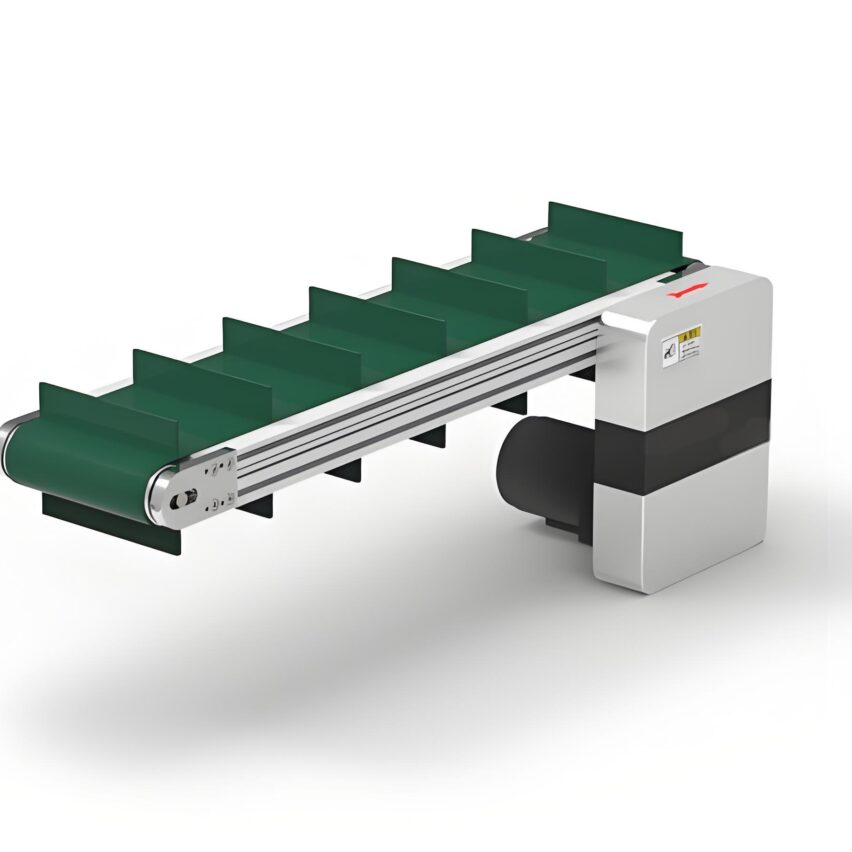How does the automatic material handling line turn messy materials into neat packages? Behind this is the perfect fusion of intelligent technology and precision machinery. This article will reveal the whole process from separation to packaging, and bring you to understand the core mystery of industrial automation.
Material separation: the starting point for intelligent sorting
How do automatic material handling lines cope with the chaos of piles of material? The answer lies inIntelligent Separation Technology. At the start, the material enters the system via a loading device such as a vibrating disc or conveyor belt. For example, a separating and shaking unit uses multiple inverter belts to create a speed differential that generates centrifugal force to shake adhering materials (e.g., confectionery or parts) into individual pieces. The key to this process is:
- differential speed control: Efficient separation is achieved by adjusting the difference in belt speeds, avoiding errors and omissions in manual sorting.
- Sensor Synergy: Photoelectric sensors monitor the status of materials in real time to ensure that only qualified individuals move on to the next stage.
Self-question: How does the material remain stable after separation? The answer is flexible baffle design to prevent breakage of fragile products.
Organising and sequencing: the heart of precision targeting
How do you ensure that materials are neatly arranged after they have been separated? of the material handling lineServo Pitching SystemPlaying a central role. The steering feed unit transports individual materials to the adjustment zone, where the two belts are dynamically speed-regulated according to photoelectric signals - accelerating the material chase if the material is too widely spaced, and synchronising the speed if the spacing is right. Typical examples include:
- stacker belt: Ensure that materials are tightly aligned in preparation for positioning.
- phase contrast: The positioning unit calibrates the position of the material by means of a chain angle sensor with an error of less than 0.5 mm.
The highlights of this session arestepless speed controlThe machine can be adapted to different sizes of products (e.g. square pastries or round chocolates) without the need for mechanical modifications.
Packaging integration: the key to a fully automated closed loop
How do collated materials become finished products? The end-of-line processing unit is made up ofIntelligent Packaging SystemsComplete the closed loop. The stacking chain stacks the material in a preset pattern (e.g. 1 x 2 or 2 x 3), followed by a transition belt that conveys it synchronously at the pillow wrapper line speed. Core steps include:
- Automatic sealing: Hot or cold sealing technology ensures that the package is airtight and isolated from external contamination.
- Label implantation: The system automatically prints production date and batch information to enhance traceability.
Self-questioning: How can packaging efficiency be quantified? Taking Delta solution as an example, it handles 500 materials per minute with an error rate of less than 0.1%.
Intelligent control: the "brain" that drives efficient processes
How does the whole process achieve zero human intervention?Integrated control systemsis the driving force behind it. Electronic cam technology based on PLC and servo drives synchronises the stocking line with the packaging machine in real time. The advantages are reflected in:
- Switching recipes at the touch of a button: Stores different product parameters and switches production specifications in just 5 seconds.
- digital twin preview: Verify the feasibility of new product delivery through CAD simulation, reducing trial and error costs.
The highlights areadaptive algorithmThe company can dynamically respond to fluctuations in orders (e.g., 450 packets/minute in high season → 120 packets/minute in low season).
Industrial automation is by no means a cold pile of machinery, but the crystallisation of humane design - it frees up repetitive labour, but does not deprive craftsmanship. When the material handling line to millimetre precision to guard the quality of the product, we see not only the efficiency improvement, but also the manufacturing industry on the "zero defect" of the ultimate pursuit.













